
By Angelo Randaci, Earth’s Ally Horticulturist
Angelo’s passion for plants has led him to explore many areas of horticulture including research, grounds management, technical training, design and nursery management.
Flowers with Faces
Plants have an intimate association and co-partnership with pollinators. Their pollination strategies incorporate an astounding array of distinct colors, shapes, and scents–all for the purpose of attracting pollinators to their flowers. Flamboyant colors together with enticing fragrances persuade insects, animals, and birds to sample tasty nectar hidden within their colorful blooms. Sometimes their shapes even mimic certain female insects to lure males to both deposit and pick up pollen. Many plants appear to have flowers with faces.
These curious-looking blooms often resemble recognizable images of plants, animals, or something else, depending upon interpretation. As a result, both humans and pollinators enjoy the myriad shapes and forms of these most unusual flowers with faces.
Insects, birds, aliens, and even naked men are represented here, entirely open to one’s imagination.
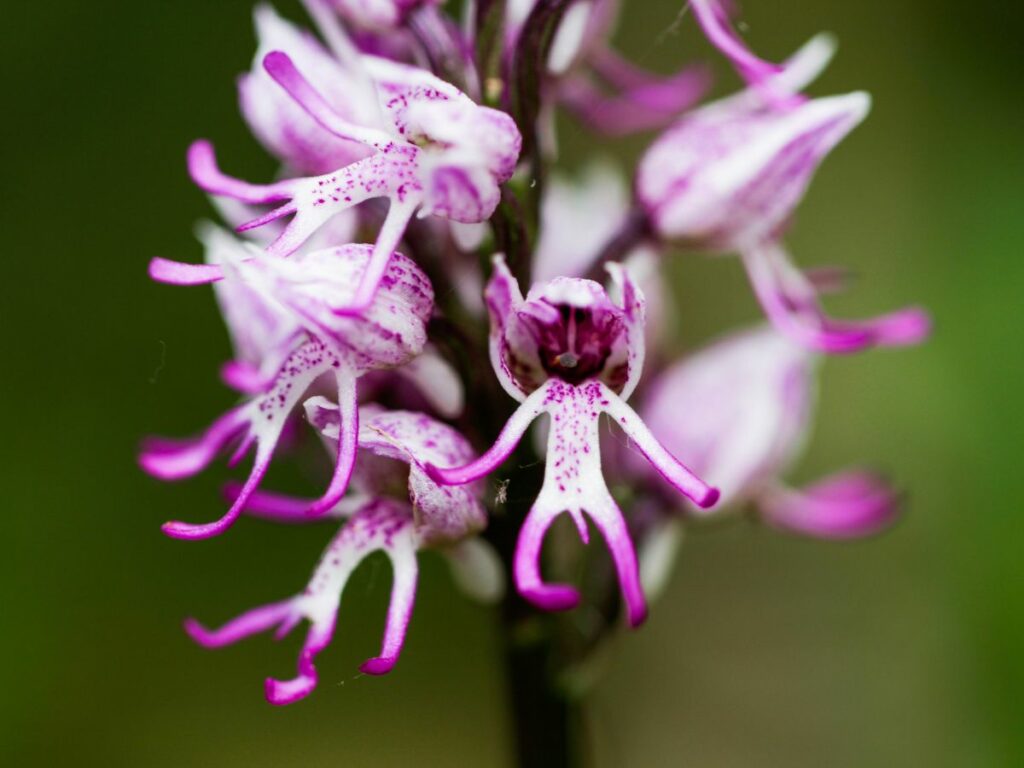
This orchid is common throughout the Mediterranean region, growing in localized colonies. It gets its common name from each flower’s lobed lip, which resembles the naked man’s general shape. The flowers grow in clusters giving the appearance of hanging men. Sahlab, also called Turkish Delight, is a traditional Turkish drink made from the tuberous roots of orchids of this genus.
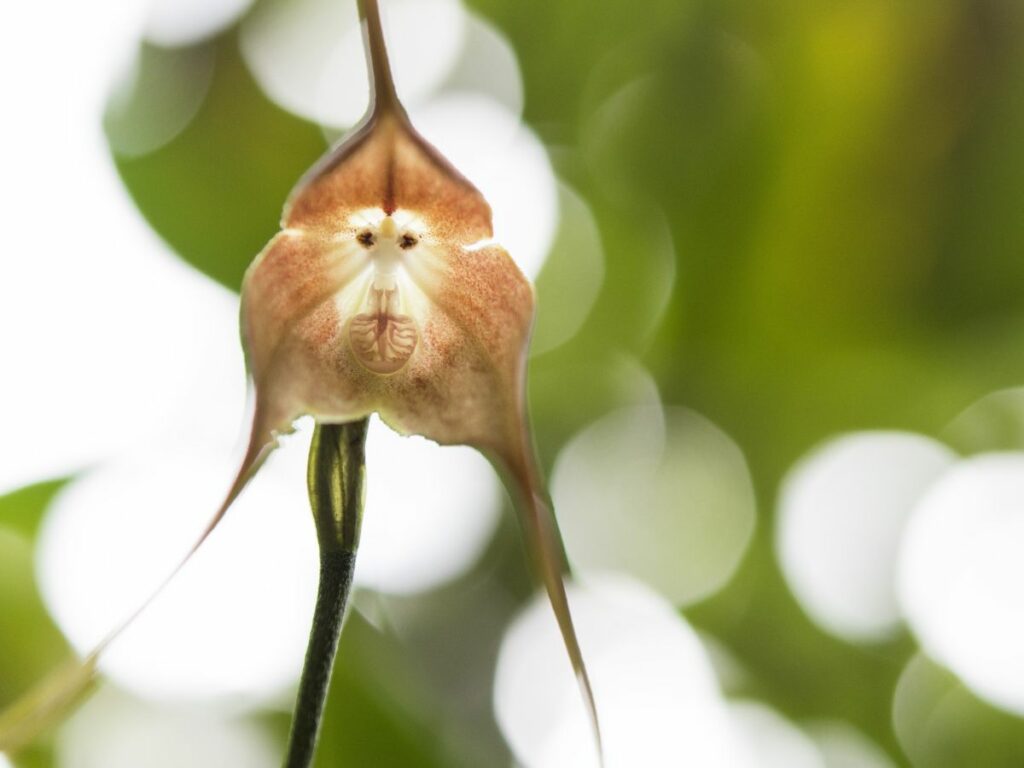
This fragrant orchid is native to the tropical highland forests of Ecuador. Its orange-scented fragrant flowers look remarkably like the face of a capuchin monkey. The genus name “Dracula” comes from the two long fang-like petals.
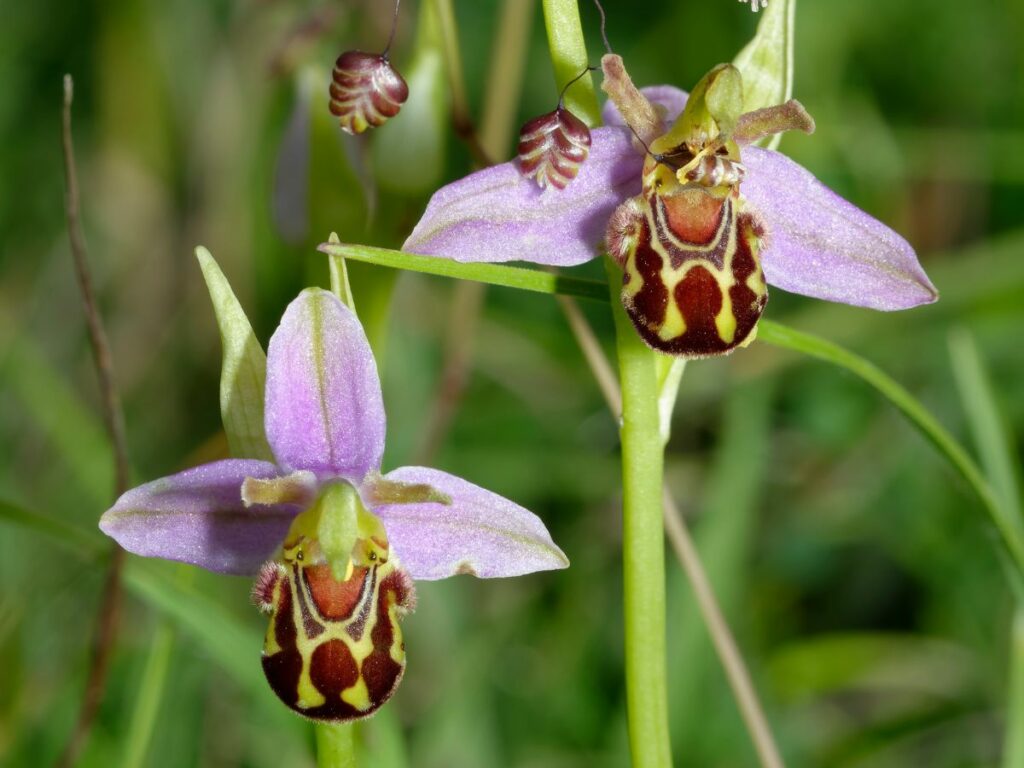
The bee orchid draws its common name from its distinctive appearance which to many resembles a comically-smiling large bee. Not only do they look like bees, but they also emit a scent to attract bees, affecting pollination. They also rely heavily on self-pollination because they grow in a cool wet climate where there aren’t many bees to pollinate. The bee orchid shares a symbiotic relationship with a particular type of fungus, necessary for its survival.
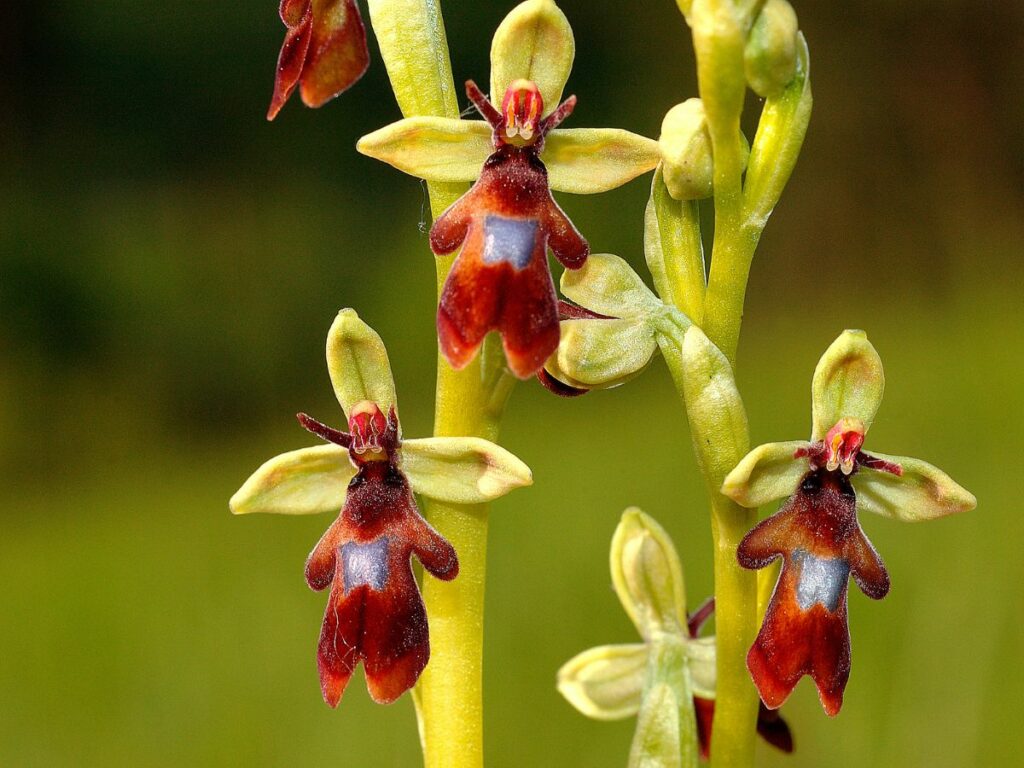
The fly orchid is another member of the Ophrys genus, this one is rather alien-like and aptly named for its ability to attract flies and aphids by secreting pheromones.
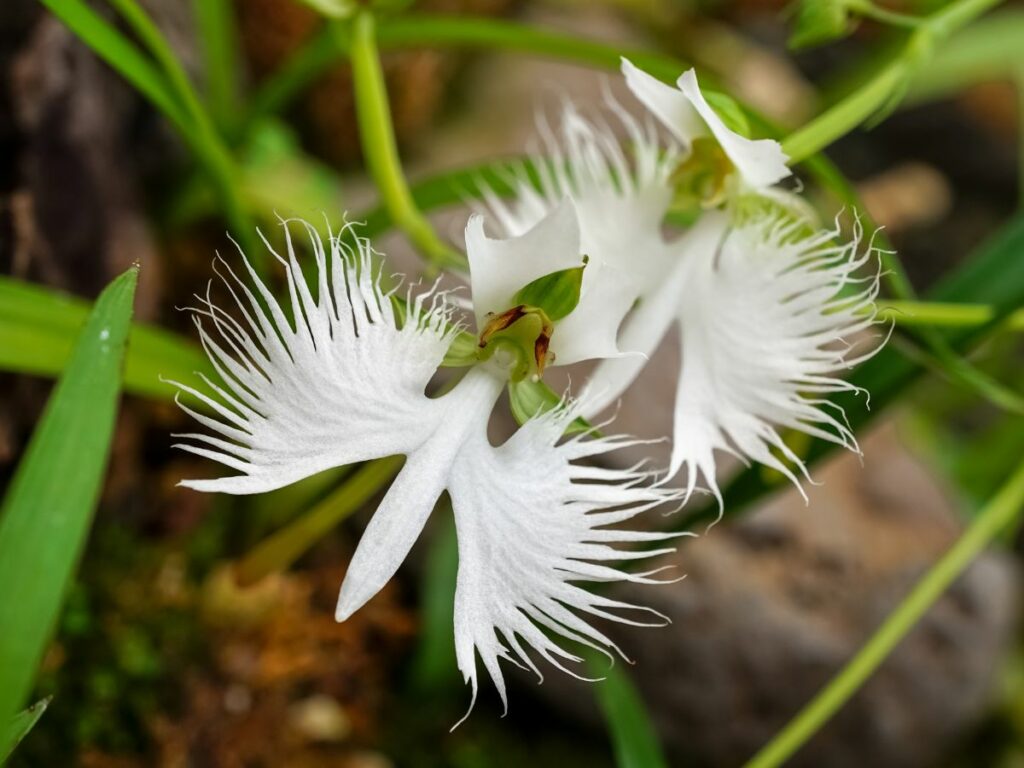
The elegant white egret flower is a hardy terrestrial orchid that not only looks like a white egret in flight but also has symbolic meaning. The delicate flowers symbolize happiness, love, and the ideal relationship between two people.
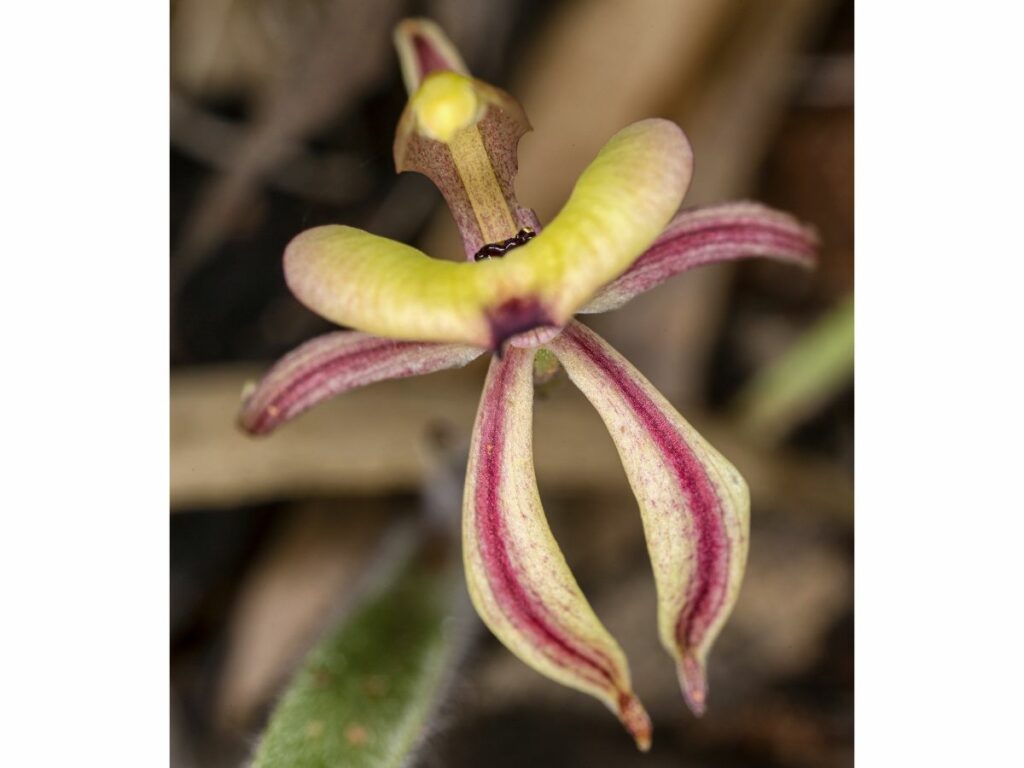
The clown orchid is also known as the ant orchid, man orchid, and jack-in-the-box. This entertaining flower appears to be wearing clown pants complete with outstretched arms to invite pollinators.
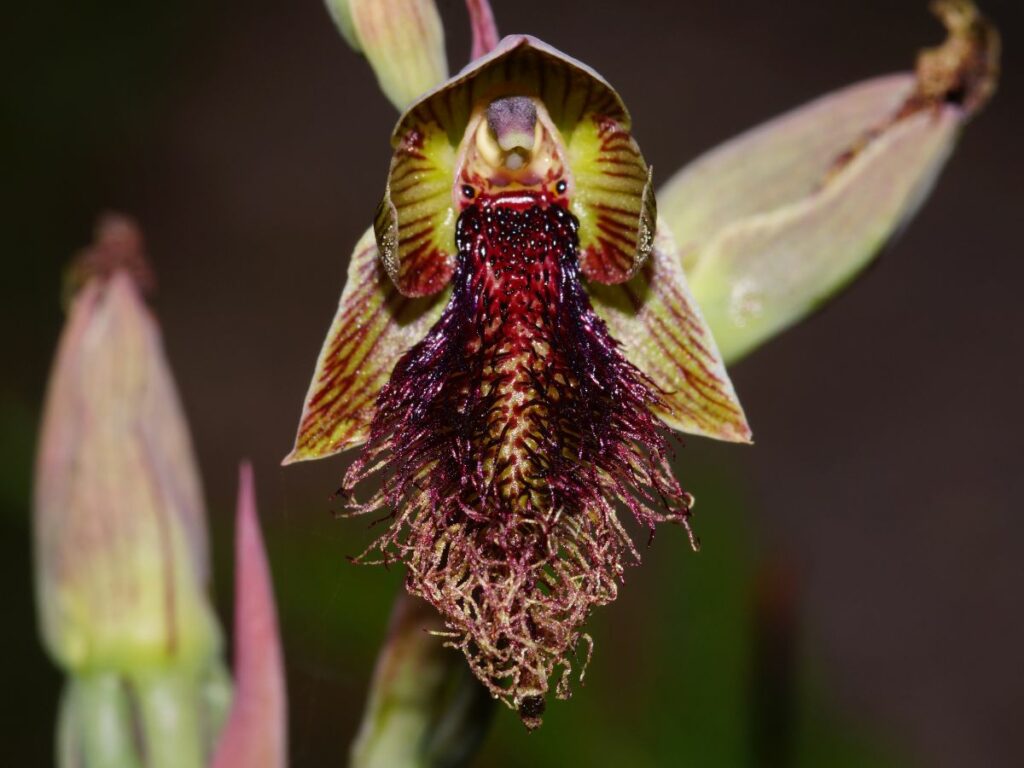
We can see where this orchid got its common name. In general, purple orchids symbolize dignity, respect, and admiration–as well as symbolizing royalty, wealth, and class.
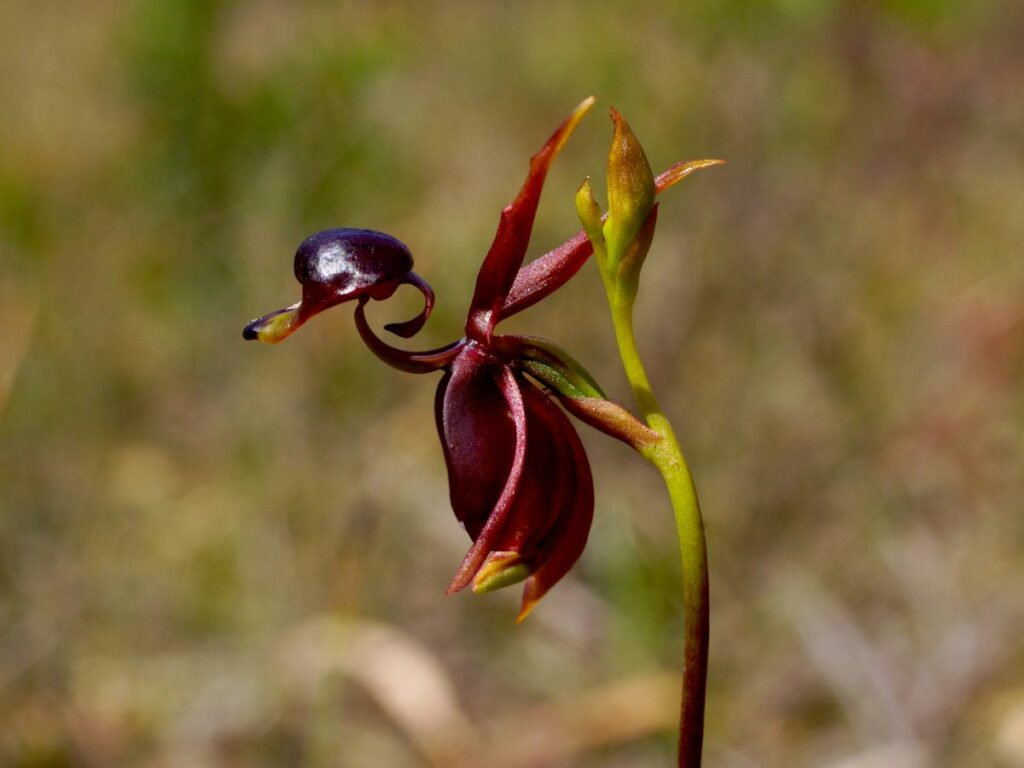
The Flying Duck Orchid employs an interesting method of reproduction, called pseudocopulation. This is where a male insect attempts to mate with a flower that looks like the female of its species. During this process, the male insect distributes pollen to other flowers. The flying duck orchid is a prime example of this. Male sawflies often mistake the labellum of the flower for a female sawfly. This orchid depends symbiotically on a particular type of vegetative fungus that only grows in Australia. For this reason, it is not propagated.
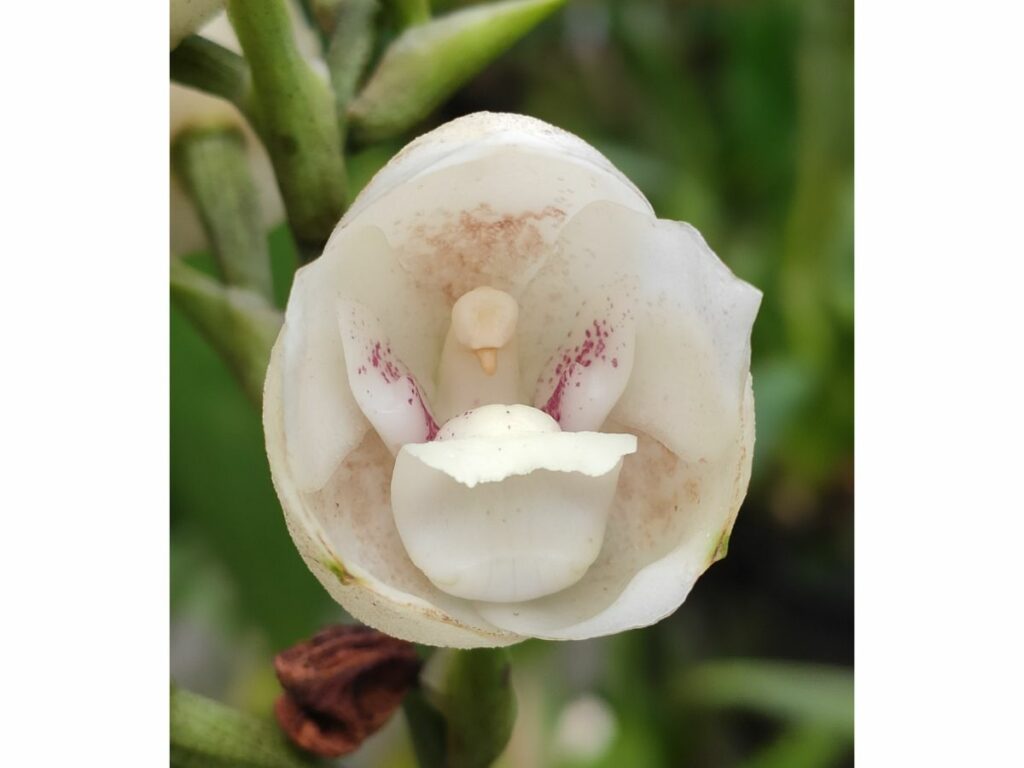
When William J. Hooker–an English botanist and botanical illustrator—described this orchid, he named it Peristeria after the Greek word meaning dove. He thought it resembles doves among flowers. Also nicknamed Holy Ghost Orchid as a Biblical reference to the Holy Ghost taking the form of a dove. This is the national flower of Panama.
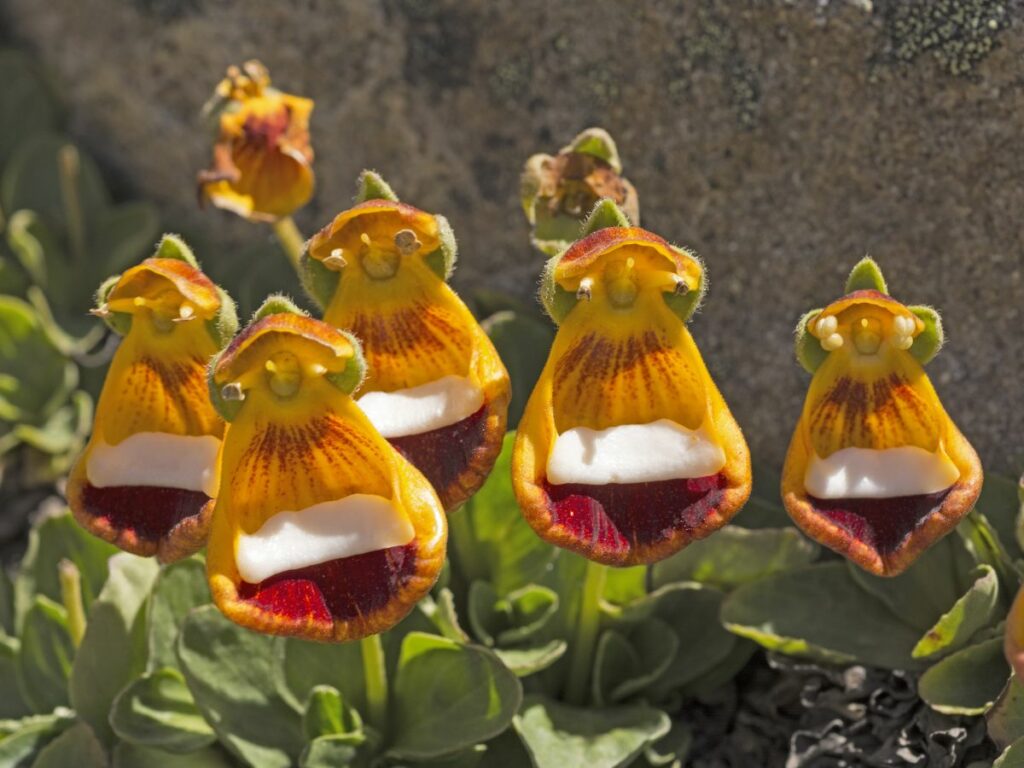
The Calceolaria genus commonly referred to as Pocketbook Plants are known for its unusual flower shapes. One of the most distinctive of this group is Darwin’s Slipper or Happy Alien. This is an ornithophilic plant meaning that birds pollinate it. In this case, one bird in particular, the lesser seedsnipe. The seedsnipe is attracted to the flowers which are high in sugar content. While feeding, these birds disperse pollen from flower to flower.
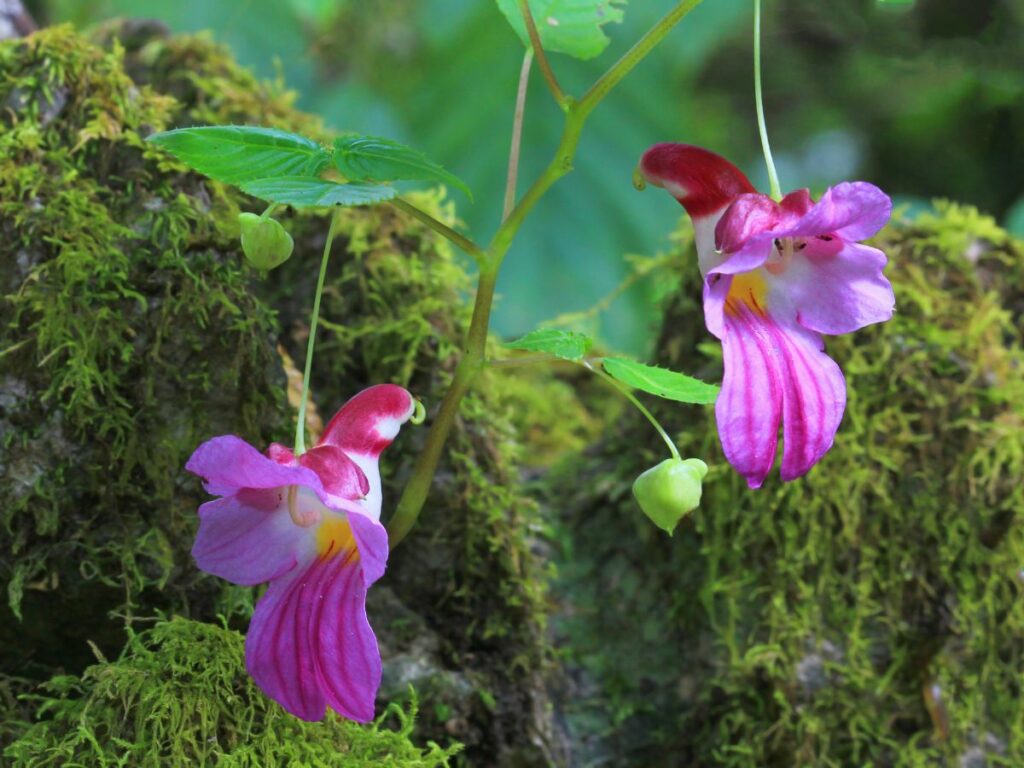
Parrot flower is a very rare type of balsam impatiens growing in the wild in northern Thailand as well as the northeast Indian state of Manipur. The species name “psittacine” is Latin for “parrot-like” in reference to the parrot-shaped blooms. This is one plant you will not find listed in seed catalogs. The reason is that Thailand has declared it to be a protected species and will not allow commerce of this plant. Counterfeit seeds are often sold claiming to be the real thing.
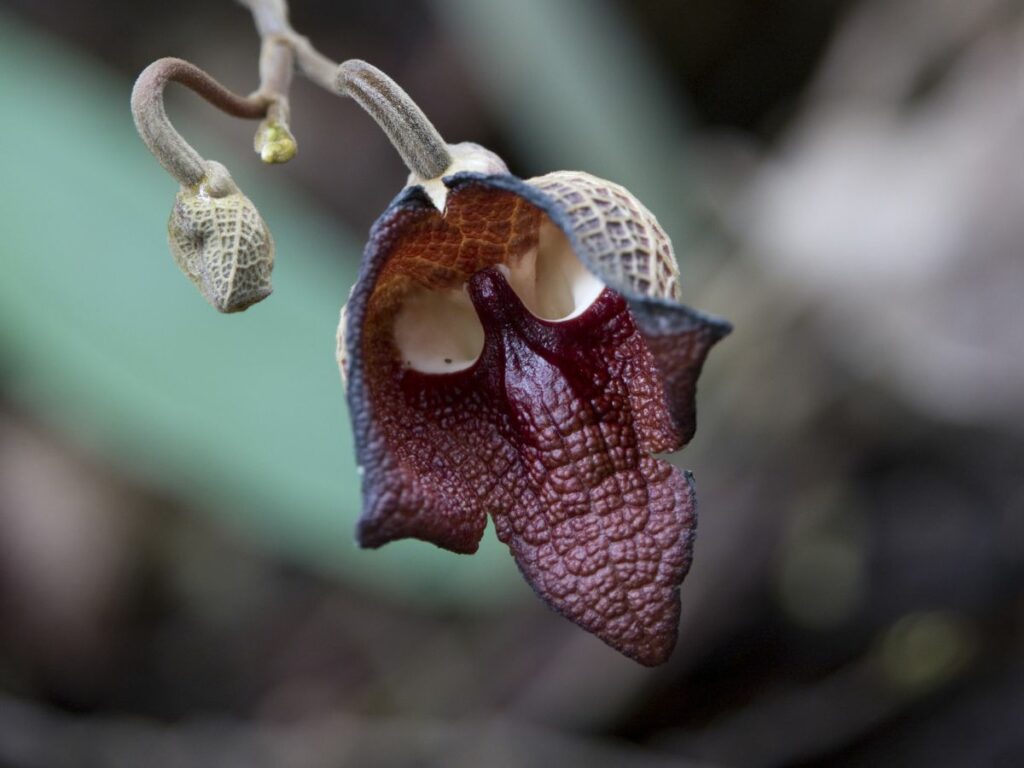
This rare and localized small tropical forest understory tree in Guatemala and El Salvador is fittingly named for its resemblance to the famous Star Wars villain. The unusual appearance of the flower together with a powerful aroma combine to attract pollinators. The plant attracts flies with a malodorous scent that mimics rotting flesh. Insects fly into the cavernous-looking white “eyes” and are momentarily trapped inside the flower just long enough to become covered with pollen. Once free, they will transfer pollen to other Darth Vader flowers.
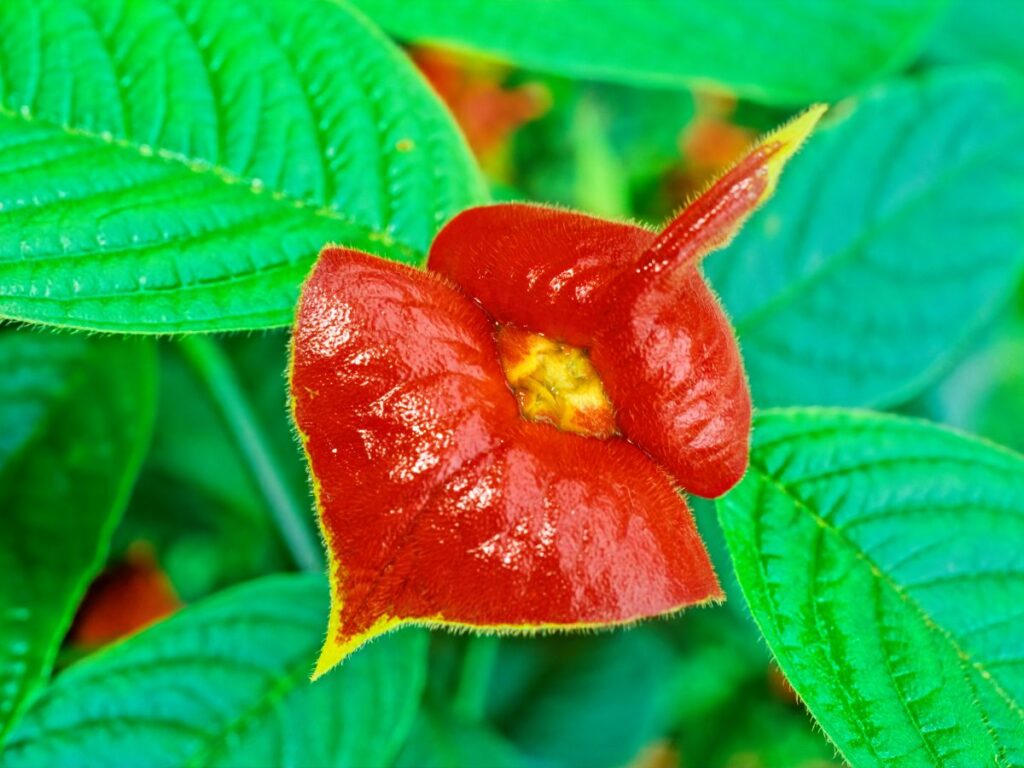
This tropical plant is most notable for its distinctly lip-shaped red bracts most evident before the tiny star-shaped flowers appear. This plant does not give off a scent. Palicourea elata relies instead on the bright red bracts to attract pollinators such as butterflies and hummingbirds.
Keep your plants healthy by treating them with Earth’s Ally 3-in-1 Plant Spray. For best practices, treat all new plants entering your home or gardening space, then apply once a week to prevent pest infestation. We’d love to hear how you’re using Earth’s Ally 3-in-1 Plant Spray. Share your experience and stay connected with the #EarthsAlly community on Facebook, Instagram and Twitter for access to our latest blog posts, giveaways and exclusive promotions.
